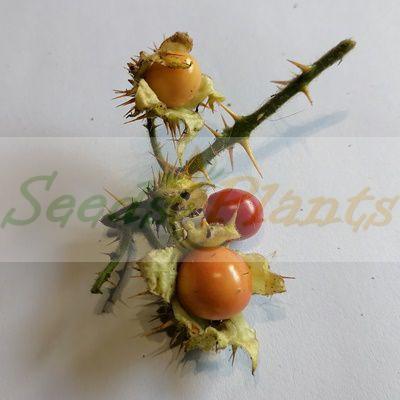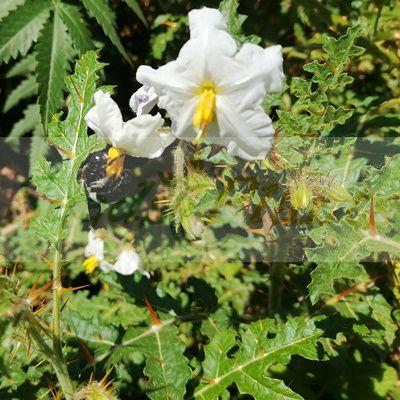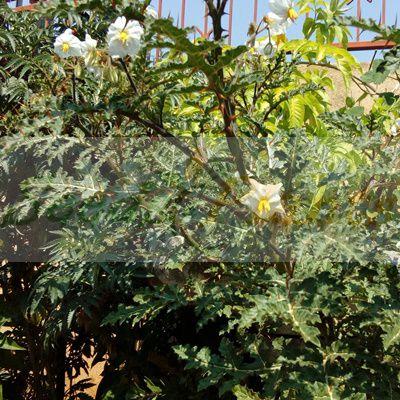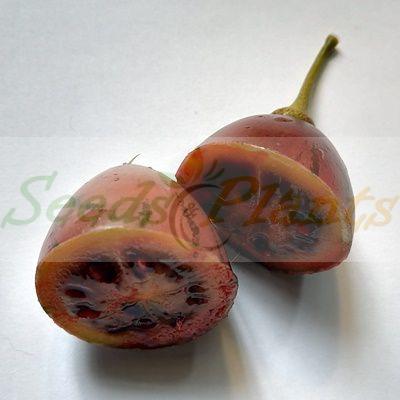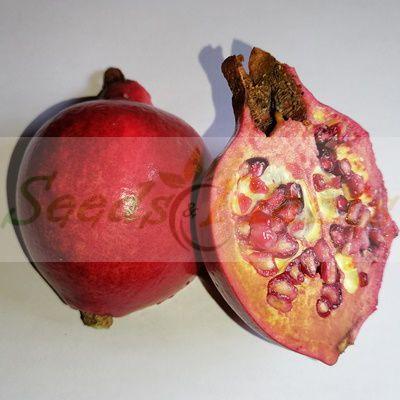Litchi Tomato – 5 Seeds
(Solanum sisymbriifolium)
R50.00
The Litchi tomato is a unique heirloom plant in both appearance and taste.
Indoor Sowing: Late Winter and Early Spring
Direct Sowing: Spring and Summer.
Out of Stock
Email me when the product is back in stock.
The Litchi tomato (Solanum sisymbriifolium)is a unique heirloom plant in both appearance and taste. It is native to tropical and warm temperate regions of South America. The litchi tomato fruits have been an important food staple in indigenous cultures for hundreds of years. The French botanist Michel Felix Dunal first described the Litchi fruit scientifically in 1813, hence the common French name Morelle de Balbis.
Common Names include: sticky nightshade, vila-vila, red buffalo-bur, Morelle de Balbis, and fire-and-ice plant. Alco-Chileo , arrabenta cavalo, dense-thorn bitter apple, doringtamatie, espina colorada, fire and ice plant, jeweelie, litchi tomato (English), manacader, morelle de balbis, red buffalo-burr, sticky nightshade, wild tomato , wildetamatie.
Its dark red cherry-size berries, with the distinctive flavor of sour cherries and a hint of tomato, can be used in a wide variety of culinary applications — from fruit tarts, preserves, jams and sauces, to sorbets and wine. Its sweet and sour qualities mean it can be adapted for any recipe based on tomatoes, cherries, or cranberries.
The stem and branches are sticky, hairy, and armed with flat, yellow-orange spines up to 15mm in length. The oval to lance shaped thorny leaves have stems 1-6cm and are hairy above and below with stellate and glandular hairs. Sharp thorns, about a half inch in length, are all over the plant, even on the top and undersides of the leaves.
The husks that cover the fruit are prickly as well, but these burst open for easier retrieval as soon as the berry is ripe. Because the plant is in the nightshade family, and a close relative of both the tomato and potato, its fluffy white flowers resemble potato or eggplant flowers, though they are more profuse and striking. This plant is loved by black and white African carpenter bees, which are great pollinators!
The fruit forms inside a husk like a tomatillo or ground-cherry and as the fruit ripens, the husk bursts open. The fruit is ripe enough to eat when it can be removed easily from the stem. The interior of the fruit is yellow to creamy gold and filled with tiny flat seeds.
Growing Litchi Tomato
Indoor Sowing: Late Winter and Early Spring
Direct Sowing: Spring and Summer.
- Start litchi tomatoes just as you would peppers and tomatoes.
- Sow litchi tomato seeds indoors 6 to 8 weeks before the last frost date for your area.
- Surface sow the seed in seed flats or individual pots filled with sterile potting mix and cover with a layer of the soil mix.
- Moisten the soil and place the flats in a warm spot.
- Litchi tomatoes will germinate faster when soil temperature is at least 21°C.
- Germination can take about 1 – 2 months, so patience is required.
- When seedlings have their first set of true leaves, thin to one plant per pot.
- Litchi tomatoes can be hardened off and transplanted outdoors once all risk of frost has passed and soil temperatures have warmed to 16°C.
- Plant litchi tomato seedlings at least 3 feet apart, as the plants can get very big.
- Litchi tomatoes require a long growing season, about 90 days from transplanting outdoors to harvest.
- It loves warmth and sunlight, but is very tolerant to light frosts and can survive in temperatures as low as -4°C.
- Will grow best in full sun but can tolerate some light shade too.
- The plant prefers moist and sandy soils and also grows well in clay soils. Water once a week.
- The plant is resistant to most pests and disease.The leaves and stems of the plant contain solasodine, a substance that is highly toxic to attacking fungi and insects.
Disclaimer
Medicinal Information:
All medicinal information on this website is for educational and informational purposes only and may not be construed as medical advice. The information is not intended to replace medical advice or treatment offered by healthcare professionals.
Seeds, Plants, Plant Cuttings, Geophytes and Dried Herbs:
In some countries and provinces, certain plants are deemed as invasive and are not allowed to be planted at all, whilst some plants are allowed to be grown only in certain areas or provinces. The onus is on you as the buyer to familiarize yourself with the regulations pertaining to your location, before purchasing any of our seeds, plants, plant cuttings, geophytes or dried herbs. We will not be held liable, should you purchase any seeds, plants, plant cuttings, geophytes or dried herbs. from us which are prohibited in your country or province.








